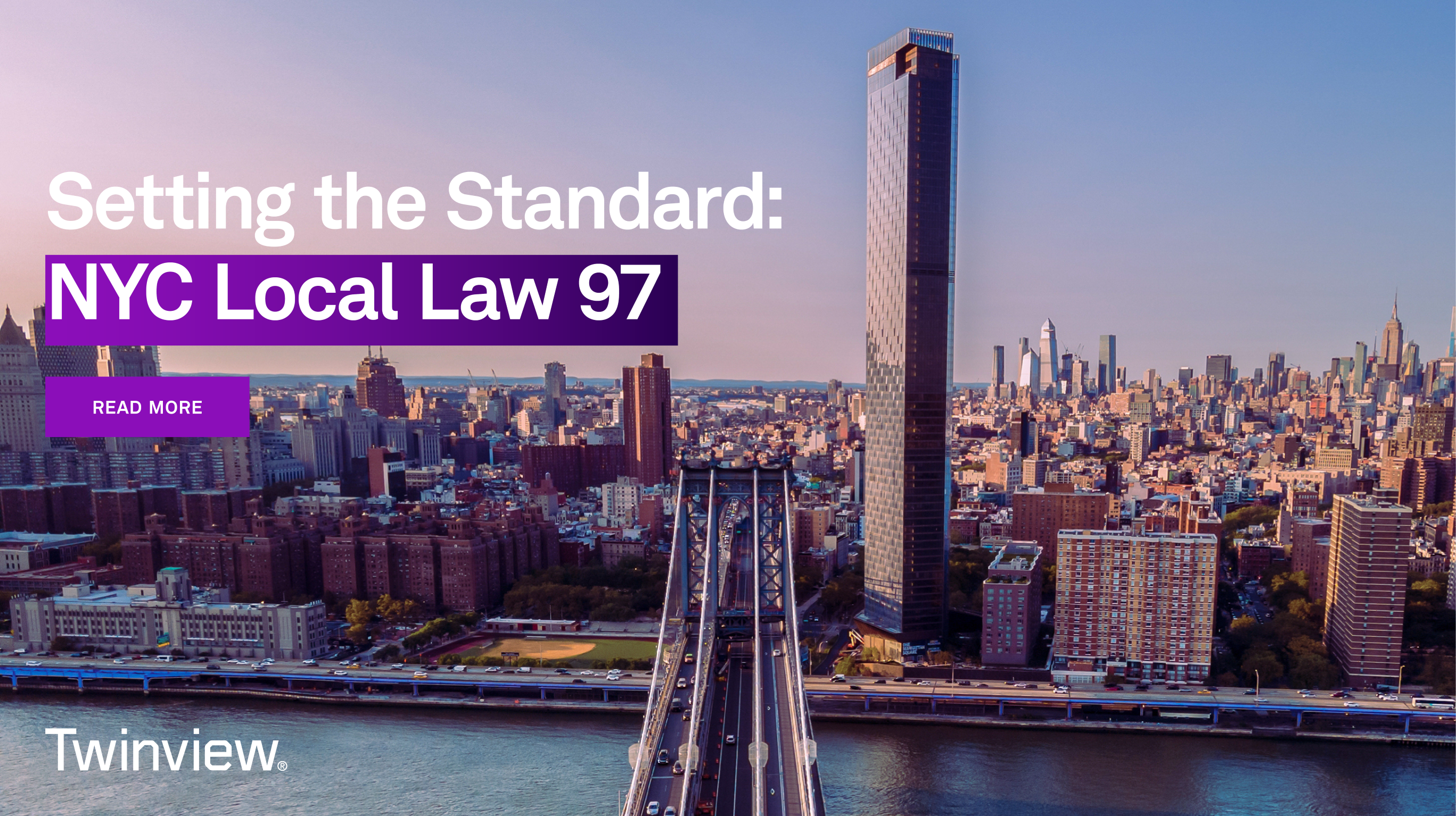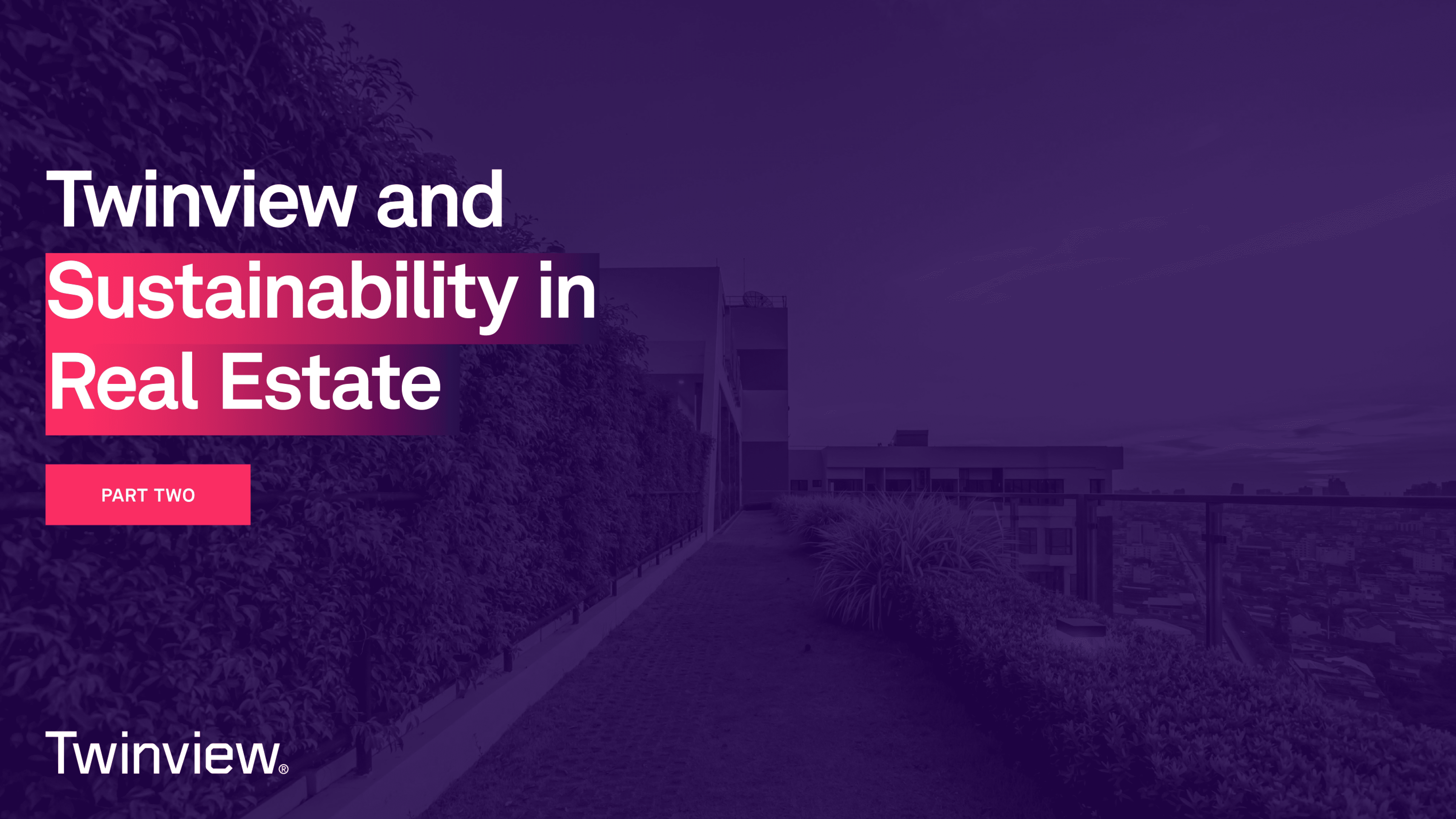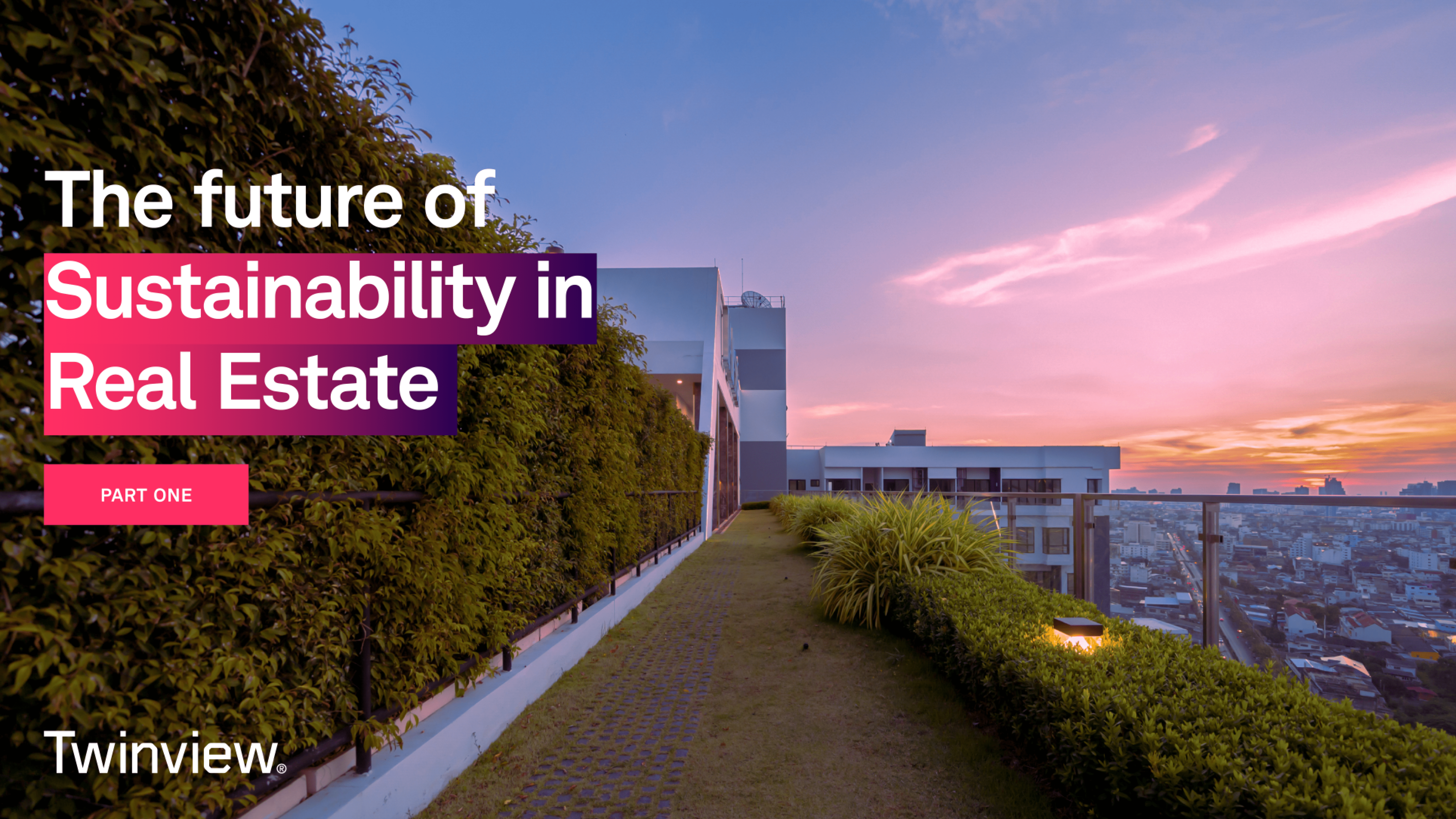15 Feb 2023 | Industry Insights
Setting the Standard: NYC Local Law 97

While London's city authorities draft rules requiring skyscrapers to dim their lights overnight, New York City is leading the way by addressing its top pollution source at pace. Demonstrating the city's commitment to becoming carbon neutral by 2050, Local Law 97, a first-of-its-kind legislation, will force landlords to identify and eliminate energy consumption inefficiencies.
After years without sufficient regulations, New York's large-scale buildings have become the city's main carbon polluters. Consuming more fossil fuels in residential and commercial buildings than any other American state, 70% of New York City's carbon emissions come from heating, cooling and powering its buildings.
To counter this, in 2019, Local Law 97 was passed by former New York City Major Bill De Blasio. Part of the Green New Deal proposals and Climate Mobilization Act, the Law requires buildings to become more energy efficient with a goal of reducing overall emissions by 40% in 2030 and 80% by 2050. To achieve these reductions, Local Law 97 places carbon caps on buildings over 25,000 square feet, meaning around 50,000 residential and commercial properties fall under the new standard. Buildings that consume more emissions than specified will face a financial penalty fixed on each tonne of CO2 over the threshold.
"This is how to fight back against climate change on the local level and guarantee a green city for generations to come."
-Commented Former Mayor Bill de Blasio.
In October 2022, the Department of Buildings (DOB) released an LL97 Covered Buildings List detailing the properties that must comply. As it stands, caps are assigned based on a building's square footage and typology. In total, the Law categorises ten building occupancy groups based on their primary use with varying caps. Along with applying to buildings over 25,000 square feet, the legislation extends to two or more properties on the same tax lot or condo association with a combined square footage of over 50,000 square feet. The type of building refers to a building's primary use. Exemplifying differing caps based on typology, data centres will be given a higher cap than hotels due to their energy-intensive service.
Building owners are directly responsible for understanding if their assets will be affected. Those who fall under the new regulations must file a Greenhouse Gas Emission report annually starting from May 2025. Notably, failure to submit an emission report or misrepresenting energy usage will be a breach of the Law. With fines of $268 assigned per metric tonne over a building's cap, failure to compile a report will result in a monthly fine of $0.50 per square foot while issuing false statements equates to a fine of $500,000. Although the Law is comprehensive in its selection of properties and penalties, some exemptions exist. Exempt buildings, including classified places of worship, non-profit hospitals, and city-owned properties, will instead have to commit to a reduction rather than a cap.
Around 4000 buildings are anticipated to fall short. Suppose of those buildings, 3,780 properties make no effort to become more efficient by the end of 2023. In that case, the Real Estate Board of New York (REBNY) and Level Infrastructure estimate that collectively, they would owe $213 million in fines. Additionally, if building owners don't do anything by 2030, 13,544 properties will face $902 million in fines, and if owners make no further improvements by 2040, 15,832 buildings will owe $1.3 billion in fines. To ensure the proper enforcement of the new rules, New York City Council have set aside a budget of 2.4 million dollars.
More recently, in December 2022, final discussions surrounding the Law began to heat up as a handful of real estate lobbyists attempted to convince current Major Adams to undo the groundbreaking rules established by his predecessor. Nevertheless, following over three hundred advisory boards and working group meetings with over a hundred stakeholders, the Local Law 97 Advisory Report was published, including an invaluable set of recommendations for the DOB.
"We are mobilising to achieve a more sustainable, resilient, and equitable city, and that includes dramatically reducing greenhouse gas emissions from the city's largest source of these pollutants- our buildings."
- Taken from page 5 of the NYC Building Advisory Report.
As the most ambitious building emission legislation enacted by any city in the world, several mechanisms will need to be adopted to maximise emission reductions. The report recommends the clarification of responsibilities for owners and tenants, the establishment of a Time of Use coefficient, the incentivisation of electrification, the expansion of renewable energy and the development of new technologies. In particular, the Board's report advised that the city should promote district thermal energy networks and encourage early, rather than delayed, action on new technologies.
Arguably, digital twins designed for the real estate sector are the new technologies New York City's building owners are looking for. These digital innovations enable property owners and their teams to reduce carbon emissions and make the necessary updates to their buildings based on precise data.
Data capture and report processing will be essential for building owners who must comply with the new rules and regulations. To avoid fines attached to the late submission of reports or those that come with false statement submissions, building owners will need to accurately track and record their energy consumption while measuring and adjusting their building's performance to remain under their granted cap. Helping owners and management do just that, Twinview is a browser-based digital twin platform that delivers measurable value by increasing sustainability and resiliency across the property sector. By providing accurate and comprehensive insights into a building's energy consumption and identifying key opportunities to reduce emissions, Twinview equips its users with the tools required to unlock their asset's potential.
As the key requirement of Local Law 97, Twinview helps reduce carbon emissions through simulation and optimisation. Twinview simulates the energy consumption of a building, identifies areas of improvement and offers a complete breakdown of HVAC and lighting systems as well as other infrastructure such as lifts. With the correct data, management feels more secure in their sustainable investment and more confident to act. By utilising building data and taking the guesswork out of large-scale operational changes, Twinview users not only reduce emissions but also streamline processes and lower costs.
Providing building owners with a unique opportunity, Twinview's sophisticated software accurately tracks and records building data. In addition, the platform also outputs bespoke, automated reports complete for review and submission. This scheduled collating of building data helps keep sustainable initiatives on track while also bearing the stress of submission deadlines.
A scalable platform accessible from anywhere in the world, Twinview features drive efficiencies. For instance, Twinview's customisable dashboards align with management goals and prioritise building data effectively, while heat mapping creatively visualises space utilisation and energy waste. Twinview's IoT devices, QR codes and Bluetooth beacons turn any object into a valuable source of information. Harnessing the power of technology, Twinview users can track asset efficiency and performance alongside corresponding documents and maintenance history. By flagging issues and connecting users with up-to-date asset performance data, management teams can productively work to ensure energy is not going to waste. As one of the most important appliances, the efficient functioning of a boiler is critical, but also one that deteriorates with age. Utilising IoT devices, Twinview spotlights irregularities in a boiler's performance and when maintenance is required, thus avoiding wasted energy consumption.
Looking towards the future, caps are expected to become more rigorous, with proposals also hinting the city will move to include more equitable requirements for medium-sized buildings. In addition, as the Paris Agreement's timeline shortens, other cities around the world are expected to follow suit and introduce regional versions of Local Law 97. With sustainable regulation on the increase, it is important to remain ahead of the curve but also to remember the true cause; fighting back against climate change.
Be prepared and strengthen your sustainable initiatives with Twinview, a powerful solution designed to help building owners transition and adapt to moving compliance targets. Minimise carbon emissions, navigate the complexities of compliance and help shape the vision for the industry with a digital twin that delivers measurable value. Book a demo and discover more about Twinview.

Industry Insights
The Future of Sustainability in Real Estate - Part 2
Part 2 of our Future of Sustainability guide explores how to drive lasting change can only be driven through weaving ESG responsibilities into the fabric of an organisation.
Read more

Industry Insights
The Future of Sustainability in Real Estate - Part 1
In a rapidly urbanising world, the real estate industry is predicted to experience exceptional growth and activity in the coming years. Yet, rising inflation rates and economic factors have begun to change this outlook, find out what the future holds in Part 1 of our Future of Sustainability guide.
Read more
Book your one-on-one appointment with one of our specialists.
info@twinview.com
+44 (0)844 800 6660
London
24 Greville Street
Farringdon
London
EC1n 8SS
Newcastle
Spaceworks
Benton Park Road
Newcastle upon Tyne
NE7 7LX

